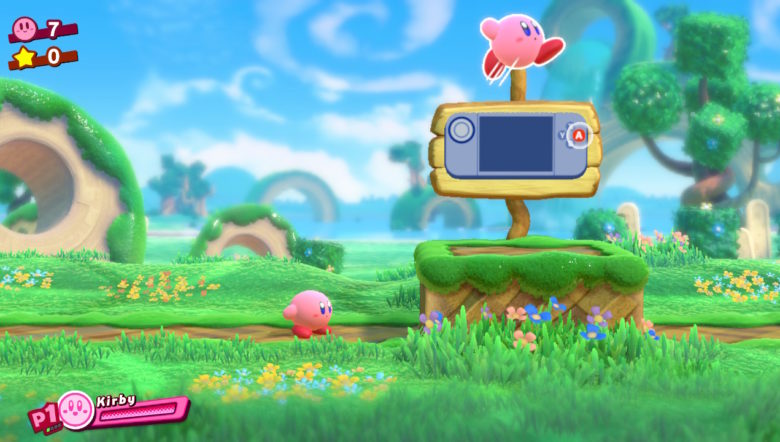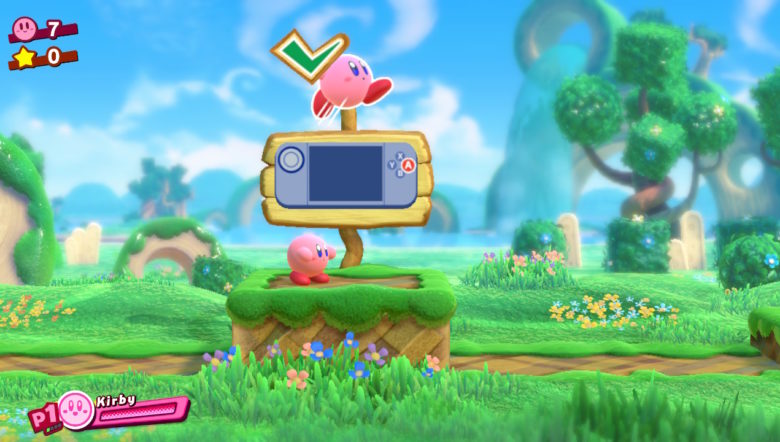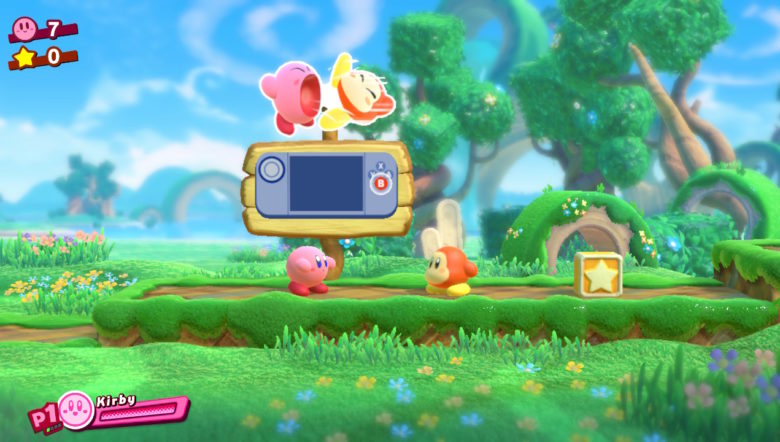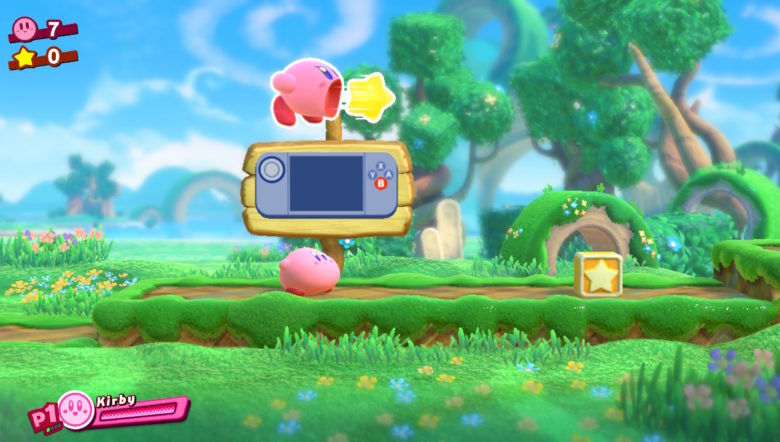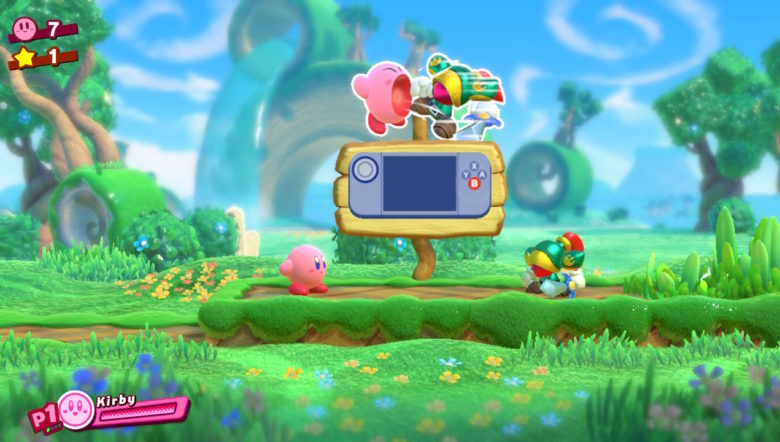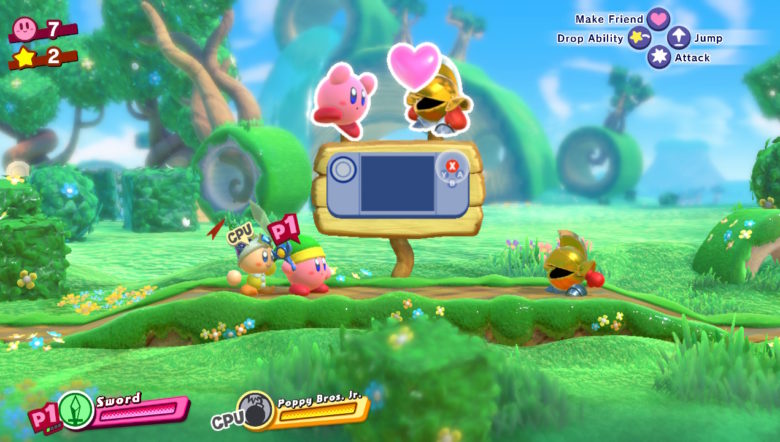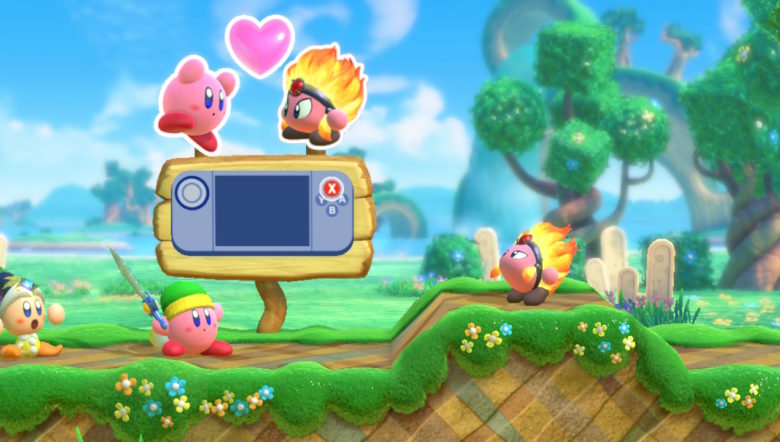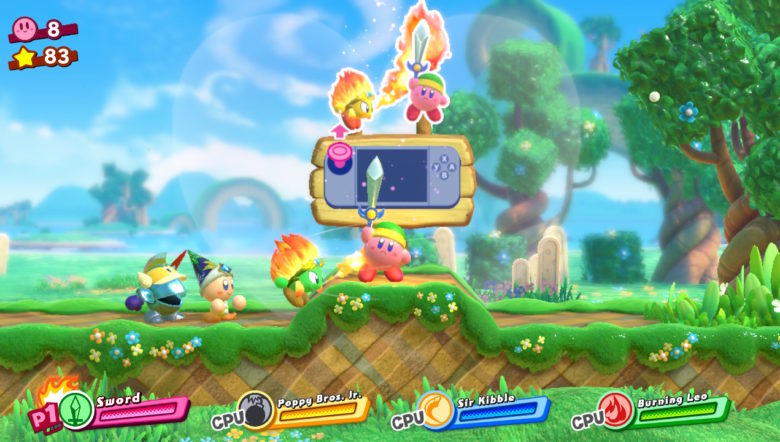This post continues a series on the instructive first areas in video games. This time, we’ll be jumping forward once again to look at the recently-released Kirby Star Allies and how its first level communicates its new and long-standing mechanics—both explicitly and implicitly.
Star Allies opens up in Green Gardens, an idyllic flatland with no immediate threat. The appearance puts the player at ease; they don’t have to worry about speeding through the level or anything pressuring them to move at a faster pace than they’re prepared to. In a tradition established over thirty years prior by Super Mario Bros., the player character starts on the left side of the screen, indicating the direction of progress in such a familiar
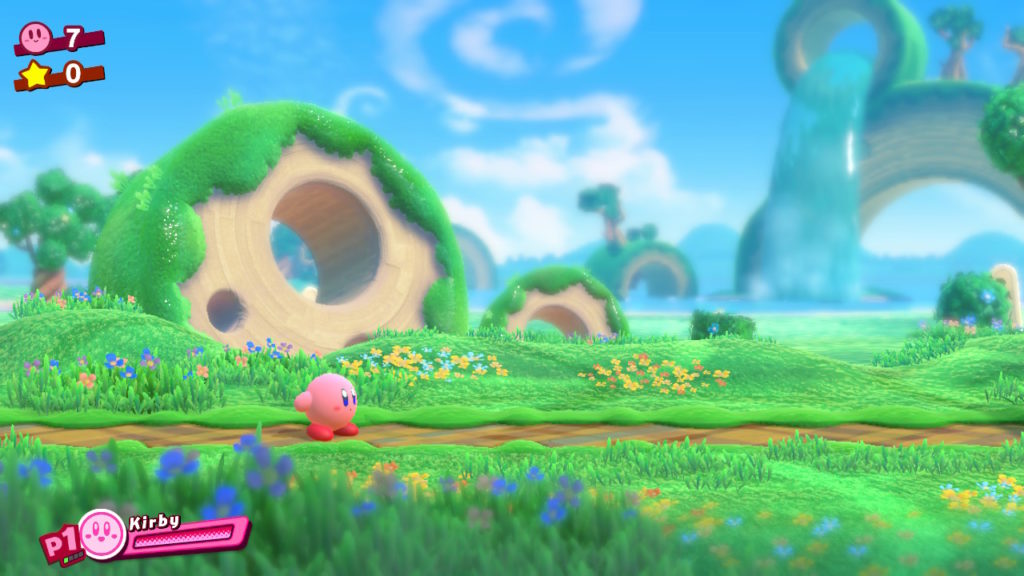
way that many wouldn’t think twice about it. As they move in that direction, the first bump in the road is accompanied by a sign with a controller icon and an animated display of the character jumping when the button is pressed. These control signs are a Kirby series tradition, and I’d like to talk about them a bit more.
Many people could reasonably be a little bothered by blatant signs with the controls on them. I myself, when starting work on this post, found them heavy-handed and distracting from the subtle encouragement presented by the level design. However, they exist for more than just fulfilling tradition. The Kirby series has always been aimed more at a beginning audience than at lifelong “gamer” types. As such, they—more than many of Nintendo’s works—have to be designed around being a player’s first game. Not only that, Star Allies itself works with several different control scheme, some of which don’t bear the familiar lettered buttons referenced by other games. It never hurts to display basic controls blatantly. It keeps the players that need it more engaged and less frustrated, and the players who don’t can walk past.
Beyond this first point, another Kirby series staple is introduced: inhaling. Rather than diving into its more complex behaviors, the player begins with inhaling enemies and spitting them back out
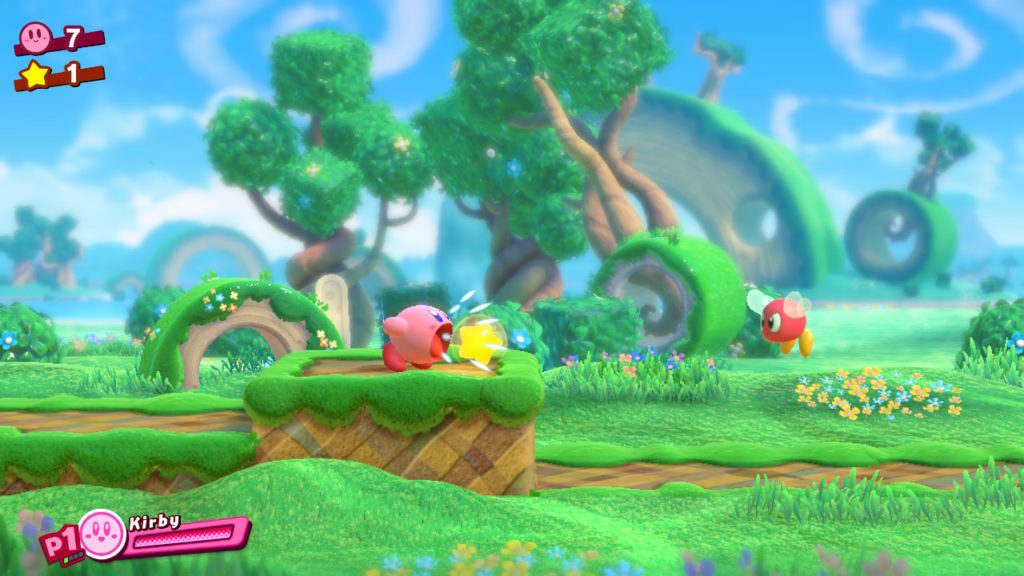
as stars. This is followed by a brief sort of variations-on-a-theme approach, with a block to spit at a moving enemy and a particular enemy that functions both as ammo and a target. By the end of this short segment, the point is clear: the player can inhale enemies and objects and spit them out at other enemies and objects. This leads nicely into the next facet of the ability: copying enemy powers.

The first such power introduced is Sword, one of the most straightforward available—and it’s accompanied by an easy-to-grasp example of its utility. The player is only at the end of the first room and they’ve already had a crash course in what makes Kirby what it is.
There are only a couple of points throughout this first level where control is taken away from the player, and they’re both brief instances to introduce mechanics entirely new to Kirby

Star Allies. The first is for a demonstration of the Friend Heart—the ability to throw a heart at a foe with a copyable ability to add them to the player’s team. This first instance is emphasized quite heavily, but this makes it impossible to pass without utilizing the mechanic, allowing the rest of the game to assume understanding. The second instance is handled similarly regarding elemental Friend Abilities—the power of an elemental ability such as Fire, Ice, or Water added to a different ability, like Sword.
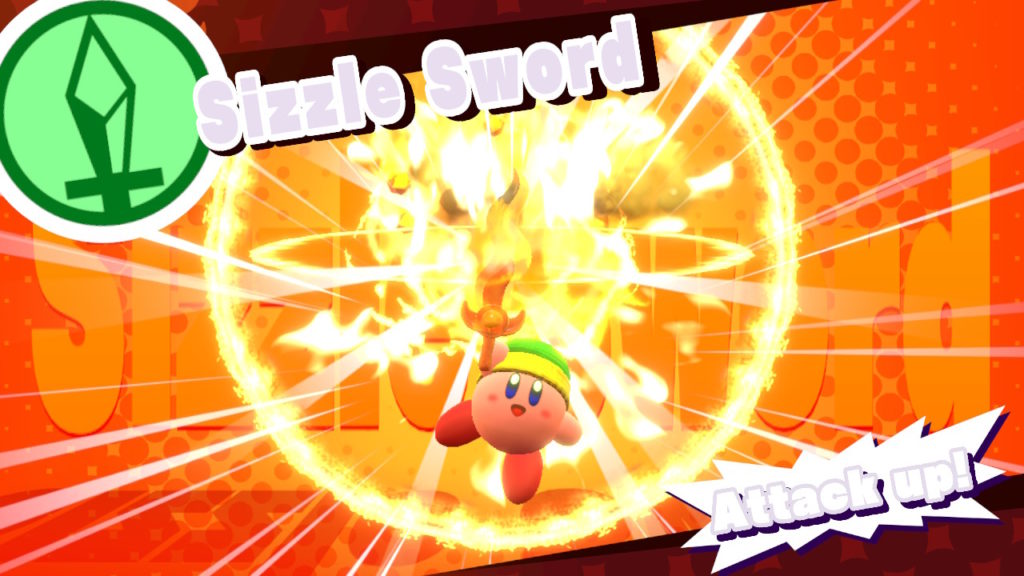
The ability to cut and burn things at the same time is then required several times as the level reaches its conclusion, as both Friend Hearts and Abilities have been established clearly enough to add to the player’s repertoire.
Before finishing the article, I want to touch on a few cases of more implicit guidance. After ally characters enter the picture, their actions can quietly inform the player of how to surpass

some obstacles. Examples throughout the stage include ducking down through platforms and dashing across short gaps—both of which have warranted control signs in prior Kirby games. Flying is a similar case, and another element which makes Kirby an overall beginner-friendly series; a great many obstacles can be circumvented by flying around them. In the cases of both flying and ducking through platforms, signs do appear should the player loiter around them, offering help to players who need it without distracting those who don’t. The level ends with the player pulling a cork using four
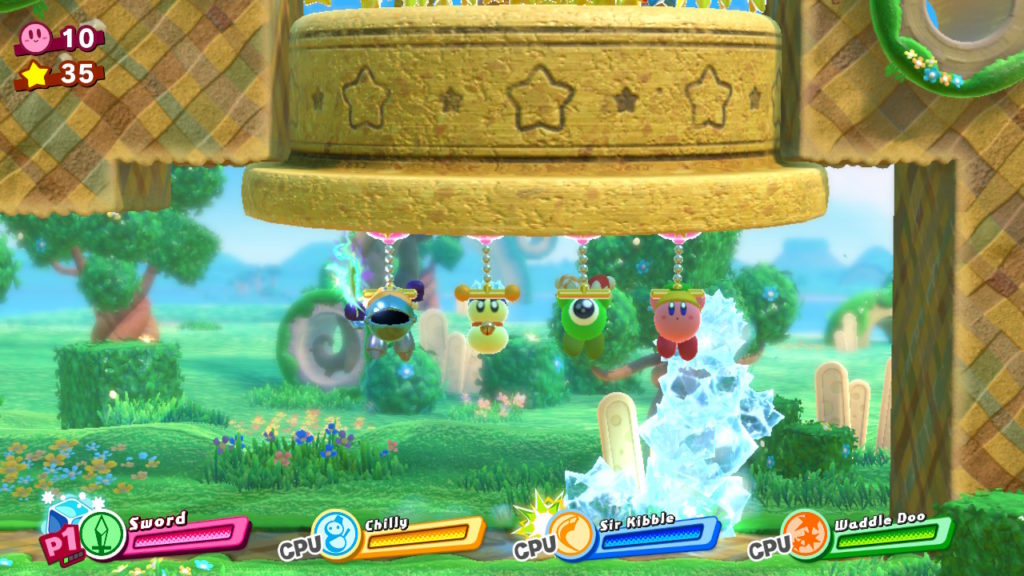
levers—one for them and each of their three allies—which was also presented midway through the stage with only two levers.
Despite some more overt guidance at the slight expense of implicit level design, the first level of Kirby Star Allies does its job well, and makes an effective introduction to both the game and the genre to follow. After its initial frankness, the game settles into a more relaxed form of direction, trusting the player to generally have a feel for its mechanics, but also offering some assistance in case it’s needed.
This concludes not only this post, but the First Impressions post series as a whole for now. It’s been fun to look at the first levels of games, but I’d like to cover topics aside from level design as well—though it will be a returning focus down the line. I have some plans I’m excited to share, so stay tuned for things to come.

